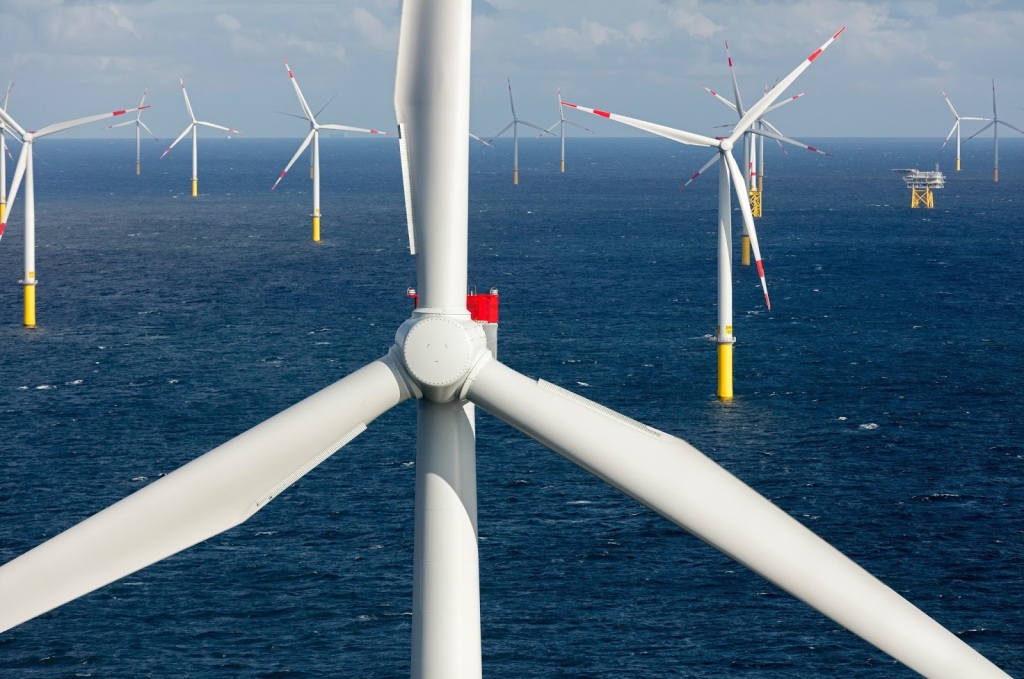Wind Power Plants: Exploring the Giants of Renewable Energy
1. Introduction
In recent years, renewable energy has gained significant attention as a sustainable solution for our ever-increasing power needs. Among the various sources of renewable energy, wind power stands tall, quite literally! Wind power plants are not only remarkable in terms of their size and structure but also play a crucial role in reducing carbon emissions and combating climate change. Join us as we explore these giants of renewable energy and learn more about how they harness the power of wind to generate electricity.
2. Understanding Wind Power Plants
Wind power plants, also known as wind farms or wind turbines, consist of multiple large-scale turbines strategically placed in areas with high wind speeds. These turbines convert kinetic energy from the wind into mechanical power by rotating their blades. The mechanical power is then transformed into electrical energy through generators housed within the turbine towers.
3. Environmental Benefits
One of the primary advantages of wind power plants is their positive impact on the environment. Unlike fossil fuel-based power plants that emit greenhouse gases, such as carbon dioxide and methane, wind turbines produce clean electricity without any direct emissions during operation. This makes them an excellent alternative to traditional forms of electricity generation that contribute to air pollution and global warming.
4. Harnessing Wind Energy
To effectively harness wind energy, location becomes crucial for setting up a successful wind farm. Wind farms are typically situated on open plains or coastal areas where there are minimal obstructions to airflow such as trees or tall buildings.
The height at which turbines are installed also plays a vital role since higher elevations generally have stronger winds due to reduced ground friction. Therefore, taller turbines can capture more kinetic energy from faster-moving winds.
5. Anatomy of a Turbine
A typical modern-day turbine consists of several components working together harmoniously:
a) Tower: The tower serves as the foundation for supporting all other elements and ensures optimal elevation for capturing maximum wind energy.
b) Blades: Usually made of fiberglass or carbon composites, the blades are designed to be aerodynamic, lightweight, and sturdy. They capture wind energy by rotating and turning the rotor.
c) Rotor: The rotor includes the hub and blades. It is responsible for converting kinetic energy into mechanical power.
d) Nacelle: Positioned at the top of the tower, the nacelle houses critical components like generators, gearboxes, and control systems that enable electricity generation.
e) Generator: The generator converts mechanical power from the turbine’s rotation into electrical power through electromagnetic induction.
6. Challenges in Wind Power Generation
While wind power plants have numerous advantages, they also face challenges unique to their operation:
a) Intermittency: Wind speed can vary significantly throughout the day or seasonally. Consequently, wind turbines do not generate a constant supply of electricity unless paired with energy storage systems or integrated with other renewable sources to balance out fluctuations.
b) Bird Mortality: There are concerns about bird mortality resulting from collisions with turbine blades. However, research shows that well-planned locations and advancements in turbine design have minimized these impacts significantly.
7. Exploring Wind Farms
Urban explorers seeking thrilling adventures often find themselves drawn to wind farms due to their grandeur and surreal landscapes. While access restrictions exist for safety reasons, there are opportunities for organized tours or designated viewpoints where visitors can witness these engineering marvels up close while maintaining a safe distance.
8. Notable Wind Power Plants Around the World
Let us now take a virtual tour of some remarkable wind farms worldwide:
a) Hornsea Offshore Wind Farm (United Kingdom): Located off England’s Yorkshire coast, this wind farm is currently one of the largest offshore installations globally. With 174 Siemens Gamesa turbines spread across an area equivalent to around 20 thousand football fields, it has a total capacity of 1.2 gigawatts.
b) Gansu Wind Farm (China): Situated in China’s Gansu province, this massive wind farm spans the equivalent of several small countries. It consists of over 7,000 turbines generating an impressive 20 gigawatts of electricity.
c) Alta Wind Energy Center (United States): Located in California’s Tehachapi Mountains, the Alta Wind Energy Center features more than 600 wind turbines spread across a vast area. With a total capacity exceeding 1.5 gigawatts, it is one of the largest onshore wind farms in North America.
d) Jaisalmer Wind Park (India): Nestled amidst the desert landscape of Jaisalmer district in Rajasthan, India, this wind park comprises over 300 turbines and has a combined capacity of approximately 1.6 gigawatts.
9. The Future of Wind Power
As technology continues to advance, so does the potential for harnessing wind energy more efficiently and sustainably:
a) Offshore Development: Expanding offshore wind farms offers immense opportunities due to stronger and steadier winds compared to onshore locations. Countries like Denmark, Germany, and the Netherlands are leading pioneers in offshore development.
b) Floating Turbines: Innovations such as floating turbines show promise for deeper waters where fixed foundations are not feasible. These structures can help tap into abundant offshore wind resources worldwide.
c) Hybrid Systems: Combining different renewable energy sources allows for better stability and reliability when faced with intermittent winds or low demand periods by utilizing complementary energies like solar power or hydropower.
10. Conclusion
Wind power plants have transformed our energy landscape by providing clean electricity while combating climate change simultaneously. Their iconic presence and remarkable engineering feats make them fascinating subjects for urban explorers seeking unique adventures around renewable energy sites globally. By embracing new technological advancements and expanding their reach into untapped territories, these giants of renewable energy will continue to play an essential role in shaping a sustainable future for generations to come.

Leave a comment